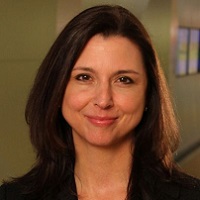 Shares Key Lessons and European Parallels in Developing eHealth Exchange Network
Shares Key Lessons and European Parallels in Developing eHealth Exchange Network
The key to building the eHealth Exchange, the largest data sharing network of its kind in the United States, is industry and government collaboration and continual testing, according to Mariann Yeager, CEO of The Sequoia Project (@sequoiaproject), who keynoted at the IHE World Summit. Ms. Yeager shared lessons learned and drew parallels of the federated structure for the eHealth Exchange for an audience of public and private sector healthcare leaders from across Europe.
“Collaboration of industry and government is critical to successful, cross-boundary health data sharing,” said Ms. Yeager. “Today’s healthcare IT Interoperability in the U.S. is a result of customer demand and the Federal government’s push for a uniform approach.”
The IHE World Summit is held in parallel to eHealth Week in Amsterdam, Netherlands. The Summit brings together healthcare IT system users and developers to address interoperability issues that impact clinical care worldwide. Ms. Yeager’s keynote presentation provided insights into the challenges and benefits of a government sponsored pilot driven by industry supported policies and IHE-based technical standards for health data sharing.
The eHealth Exchange network was initially incubated by the Office of the National Coordinator for Health IT within the U.S. Department of Health and Human Services (HHS) and transitioned to function as a public private collaborative initiative, supported by The Sequoia Project, in 2012. Under The Sequioa Project’s stewardship, the network more than quadrupled in connectivity since 2012. Current eHealth Exchange participants include large health systems, hospitals, pharmacies, regional health data sharing networks and four US federal agencies, representing nearly 1/2 of all U.S. hospitals, tens of thousands of medical groups, more than 8,000 pharmacies and 100 million patients.
“In order to scale to nationwide connectivity across the US, and enable interoperable data sharing across diverse geographies and technology platforms, the eHealth Exchange established a rigorous program,” said Ms. Yeager. “We are now seeing the fruits of that labor, with onboarding reduced from months to just a few weeks.”
